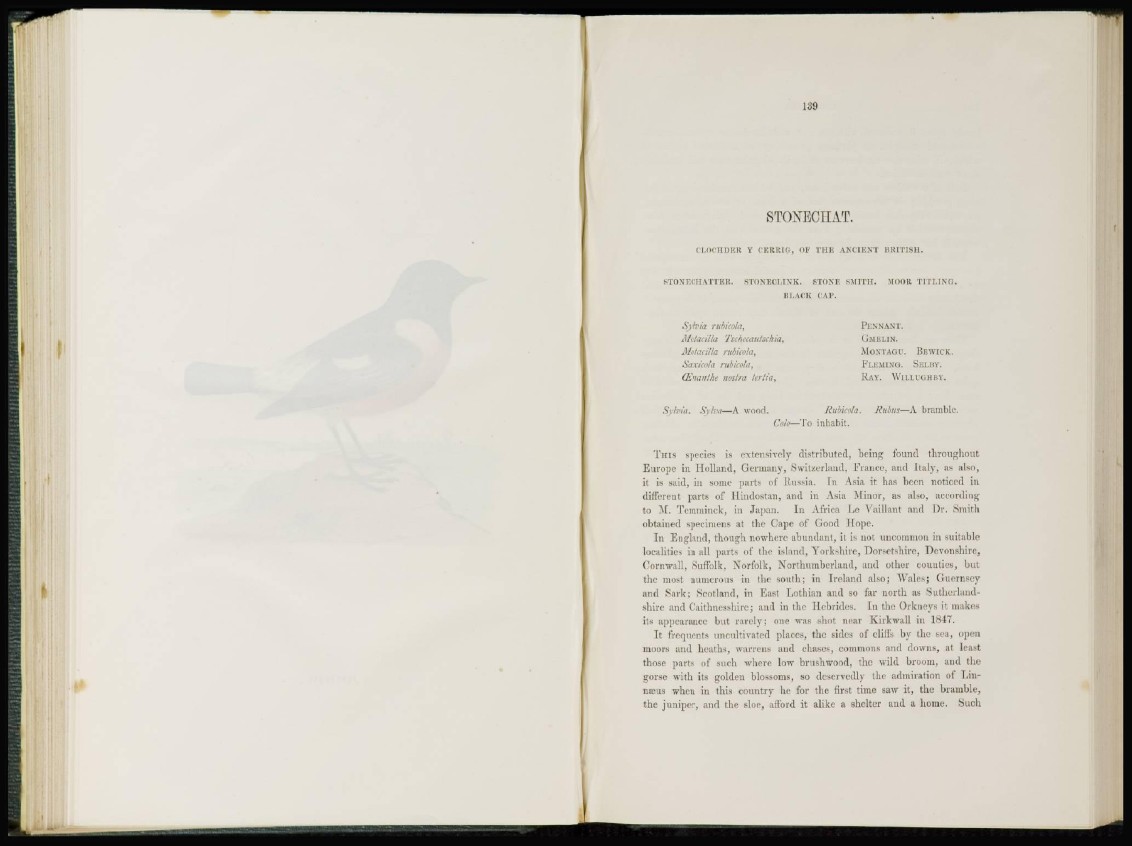
STONECIIAT.
CLOCHDÈR Y ( KTIRTG, OF T H E A N C I E N T BRITISH.
STON E C H A T T E R . STONE OL I N K . STONE SMITH. MOOR T I T L I N G.
BLACK CAP.
Sylvia rubicóla,
Motacüla Tschccauíschia,
Motacilla rubicola,
Saxicola rubicola,
(Enanike nostra tertia,
PENNANT.
GMELIN.
MONTAGU. BEWICK.
FLEMING. SELIIY.
RAY. WILLUGHBY.
Sylvia. Sylva—A wood. Rubicola. Ritbus—A bramble.
Colo—To inhabit.
T H I S species is extensively distributed, being found throughout
Europe in Holland, Germany, .Switzerland, Prance, and Italy, as also,
it is said, in some parts of Russia. In Asia it has been noticed in
different parts of Hindostán, and in Asia Minor, as abo, according
to M. Temminck, in Japan. In Africa Le Vaillant and Dr. Smith
obtained specimens at the Cape of Good Hope.
In England, though nowhere abundant, it is not uncommon in suitable
localities in all parts of the island, Yorkshire, Dorsetshire, Devonshire,
Cornwall, Suffolk. Norfolk, Northumberland, and other counties, but
the most numerous in the south; in Ireland also; AVale*; Guernsey
and Sark; Scotland, in East Lothian and so far north as Sutherlandshire
and Caithncsshire; and in the Hebrides. In the Orkneys it, makes
its appearance but rarely; one was shot near Kirkwall in 1847.
I t frequents uncultivated places, the sides of cliffs by the sea, open
moors and heaths, warrens and chases, commons and downs, at least
those parts of such where low brushwood, the wild broom, and the
gorse with its golden blossoms, so deservedly the admiration of Linnieus
when in this country he for the first time saw it, the bramble,
the juniper, and the sloe, afford it alike a shelter and a home. Such